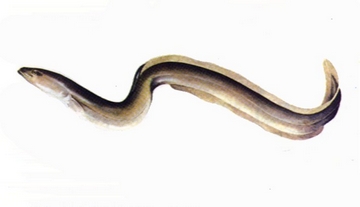The Eelposted on 8 February 2015 | posted in Hints and TipsCommon name: Eel Latin name: Anguilla anguilla  Distribution: Eels are amongst the most widespread of all coarse fish. As the eel spends a percentage of it's life at sea, it has not been limited to the rivers of the East coast unlike many other species. Eels are found throughout Europe and Asia and a closely related species is found throughout the Pacific rim. Features: The sinuous shape of the eel is almost synonymous with the species and distinguishes it from virtually all other fish. Only the lampreys, which are now rather rare in the UK, share a similar body shape, but can be distinguished by their lack of a proper mouth. Eels are dark black or grey in colour with small steely eyes and a pointed mouth ideal for feeding on a wide variety of foods. Diet: Eels will feed upon a very wide range of live and dead prey. Whilst it has long been thought that eels are scavengers, we now know that in many fisheries eels are active hunters, feeding upon live prey. Small fish often make up a large percentage of the diet of the eel. Because of their small mouths, eels will only normally take fish up to 10cm in length. Worms are the classic eel bait and these fish often feed upon both terrestrial and aquatic worms. Other invertebrates are taken, particularly by young eels. Spawning: Little is known about the spawning of eels. It has long been believed that all adult eels migrate to the Sargasso Sea where they spawn in deep water. Recently though some evidence has come to light that suggests that eels may spawn in several different areas of the Oceans, some undergoing an incredible migration to the Pacific. Whilst the young eels are carried passively by Ocean currents, the eels must swim for several thousand miles against the current during the return journey. During this migration they do not feed and must rely upon fat reserves built up in freshwater to see them through the many months of the journey. Growth: Evidence for the age of eels comes from the examination of small bones in the inner ear called the otoliths. Just like the rings of a tree, the otoliths are made up of minute layers of calcium carbonate laid down each year. By counting the number of rings, and by measuring the distance between them it is possible to work out the age and growth of the eel. Examination of the otoliths has led to some staggering facts. Eels may be as much as ten years old before reaching freshwater. They can then spend up to eighty years in freshwater before beginning their return journey. Despite having a reputation as voracious feeders, eels are incredibly slow growing and may take twenty years to reach a weight of a pound and perhaps forty years to reach three pounds. |








.jpg)
.jpg)





